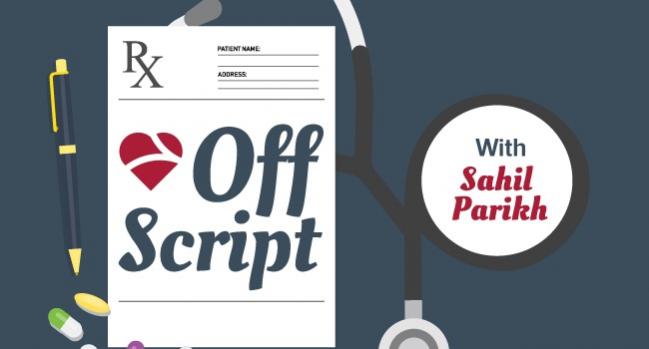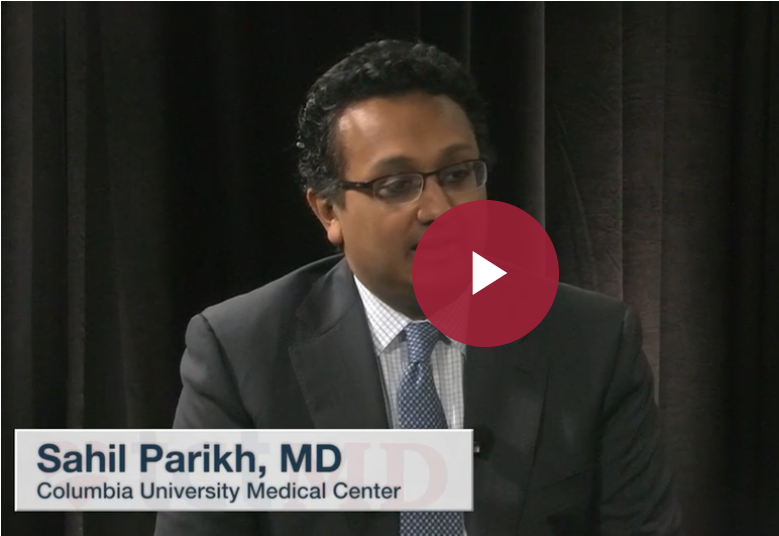Off Script: Through ‘Paclitaxelgate,’ Some Upsides to Uncertainty
The FDA panel on paclitaxel devices may not have supplied all the answers, but it may yet spur long-lasting changes to the field.

“Paclitaxelgate,” he called it, as if I were the Deep Throat of the year’s biggest controversy. This was a few months back, when I was invited to a meeting to debate the relative merits of paclitaxel-eluting therapies in chronic limb-threatening ischemia against a vascular surgeon who felt that these products should be abandoned in favor of alternate treatments, especially bypass surgery. In the opinion of this surgeon—at least for the benefit of our appreciative meeting audience, who enjoyed his hyperbole—I was little more than a shill for industry, promulgating fake news and eschewing my Hippocratic oath. Funny how today’s political vernacular has invaded our clinical discourse.
Debates like this one, along with a dramatic series of scientific publications, industry revelations, and town hall-style conference sessions, culminated last month in a much-awaited US Food and Drug Administration Circulatory System Devices Panel. All of this was initially sparked by a mortality hazard first reported late last year in a meta-analysis from Greece suggesting that paclitaxel-eluting stents and paclitaxel-coated balloons increased long-term, all-cause mortality in patients with peripheral artery disease.
For me, as an active clinician in the endovascular space, uncertainty over this mortality signal and its impact on practice have dominated my conversations with my patients and informed the procedures that I have performed over the past 6 months. Conflicting reports and analyses since December have only added to the confusion. The FDA panel, made up of FDA staff as well as clinical and scientific experts from a broad range of specialties, spent 2 days sifting through data presented by FDA staff, industry representatives, and clinical experts, each with a different perspective on one or more facets of the controversy. Here, we thought, we’d finally get some definitive advice.
I had never personally participated in a panel like this, nor had I ever witnessed such a spectacle. Clearly the panel’s recommendations were going to have a great impact on a very large number of patients who receive these technologies every year as part of their routine standard of care. Even more interesting, in some ways, was the fact that commercial strategies as well as clinical research and development for the companies who produce and market these devices were also on the line. It was clear for all who were in attendance that the stakes were high. In fact, for the first time, interventional cardiologists—represented by the ACC (I was there on ACC’s behalf) and SCAI—vascular medicine specialists (SVM and AHA), interventional radiologists (SIR and ACR), and vascular surgeons (VESS) all agreed to work together on a presentation emphasizing the importance of patient safety, the role of these devices for our patients, and the ability for our specialties to work together to collect additional data. This, we argued, could happen through established trials and registries to more rapidly assess the veracity of the risks and benefits of peripheral drug-eluting devices. I don’t think I’ve ever prepared more for 3 minutes of presentation time, and I remain proud of our collective presentation.
Data Deluge
The deluge of data presented to the panel over those 2 long days addressed several important questions and prompted very deep and measured dialogue about the value of drug-eluting technologies and patient safety. Ultimately, my chief takeaway from the meetings was that a lot remains unknown about these device and that the risk-benefit calculus must be assessed for each individual patient. And I had a second premonition. Leaving the meetings, which seemed to produce as many questions as answers, I had the sinking suspicion that the FDA would put in place draconian restrictions on use and access to these devices while safety signals were adjudicated in ongoing clinical trials.
And then, a surprise. A few weeks after the meeting, the FDA released a document summarizing the panel’s conclusions on the 12 questions posed, offering a much rosier outlook.
- Paclitaxel-eluting devices may demonstrate a risk of long-term mortality in PAD patients.
- This risk is not clearly attributable to a single device, but rather to the entire class of devices until proven otherwise.
- Clinical trials in peripheral vascular medicine are poorly conducted. The meta-analyses were conducted from trials with a large contingent of patients lost to follow-up. (Parenthetically, from the perspective of the coronary interventionalist, it appears that the high bar to which we hold ourselves for clinical trials in the coronary space is not the same in the peripheral space.)
- There are no specific subgroups that demonstrate particularly high risk or low risk.
- There is no putative cause of death. (This is a big deal—for many, this is a central problem with the “paclitaxel” argument.)
- There is no evidence suggesting mortality (or efficacy) increases with dose.
- Preclinical studies don’t give us a clue about biological effect.
- MOST IMPORTANTLY: Short-term benefits of these paclitaxel devices outweigh the potential risks (this statement is the heart of the controversy).
- Numerous possible methods for postmarket study/surveillance are available, and there is no consensus as to which technique (a new RCT, ongoing RCTs, registry data, or real-world data) would be best to assess the safety signal.
- Labeling for all vascular paclitaxel-based stents and balloons needs to be updated to reflect the potential risks.
- Future studies should consider 12-month efficacy and long-term safety (eg, 5 years) when they are conducted and focus on avoiding missing data, which has hampered our efforts at assessing device safety in this instance.
- Other indications for paclitaxel devices, including arteriovenous fistulae and critical limb ischemia (below the knee), should be similarly updated.
After reading the summary, I felt like I must have experienced a parallel universe! My sense, having sat through the entire meeting, was that the FDA was likely to drop the hammer on the entire category of devices. Now, I’m not sure.

Sahil Parikh and Eric Secemsky discuss the recent concerns over PAD stents and balloons with TCTMD's managing editor, Shelley Wood.
Like everyone else in the field, I am anxiously awaiting the FDA’s full analysis and updated guidance. I understand that companies are meeting actively with the FDA to discuss label changes. In the meantime, whereas I had been fairly reluctant to use drug-eluting devices for my patients between the FDA letter to healthcare professionals in March and the advisory panel in June, I have now gone back to trusting my instincts and having a detailed conversation with my patients about the risks and benefits of drug-eluting technologies. I also have been again using them liberally for those patients who are high-risk for restenosis. I am particularly reassured by real-world data suggesting that my use of these devices is likely going to be safe in these patients, particularly those who have few options for non-endovascular treatment, have longer lesions with heavy calcification, and those that have chronic limb-threatening ischemia.
And there may be another impact of this contentious FDA panel. Other technologies, those that have been languishing somewhat because of lack of interest—especially those that spare patients exposure to paclitaxel—are now being rapidly developed. This stimulus may prove, in the end, to be the best thing that comes out of this controversy. I also see a surprising industry-wide collaboration, coupled with the input of multiple cardiovascular societies. This can only be a harbinger of greater cooperation, faster innovation, and better options for patients in the future. Finally, it’s clear that clinical trials in peripheral arterial disease have not been held to the same rigorous standards as in other disease states. One can speculate why, but this controversy should raise the bar across the board for the conduct of vascular trials.
We may look back many years from now and say, “What was all the fuss about?” In the present, however, I am very much aware that this whole class of technologies, for better or worse, has changed how vascular medicine and intervention are practiced and the fate of these technologies will undoubtedly change how we treat patients in the coming decade. I hope that we see more innovation and better collaboration in the years ahead, and that the traditional “guilds” that protect the interests of one specialty over another do not yield to the temptation to protect their turf instead of their scientific integrity. One thing is sure: we are going to have a lot to discuss at TCT, VIVA, AHA, and the VEITH Symposium later this year. I hope to see everyone there to get your perspectives.
Off Script is a first-person blog written by leading voices in the field of cardiology. It does not reflect the editorial position of TCTMD.
Parikh is the Director of Endovascular Services and Assistant Professor of Medicine at the Columbia University Vagelos College of Physicians…
Read Full BioDisclosures
- Parikh reports research support from Shockwave Medical, TriReme Medical, Surmodics, Silk Road Medical, the National Institutes of Health, Boston Scientific; consulting fees/honoraria from Terumo, Asahi, Meril Life Sciences, American College of Cardiology, and Society for Cardiovascular Angiography and Interventions; and serving on the advisory boards for Abbott, Medtronic, Boston Scientific, CSI, and Philips.


Comments